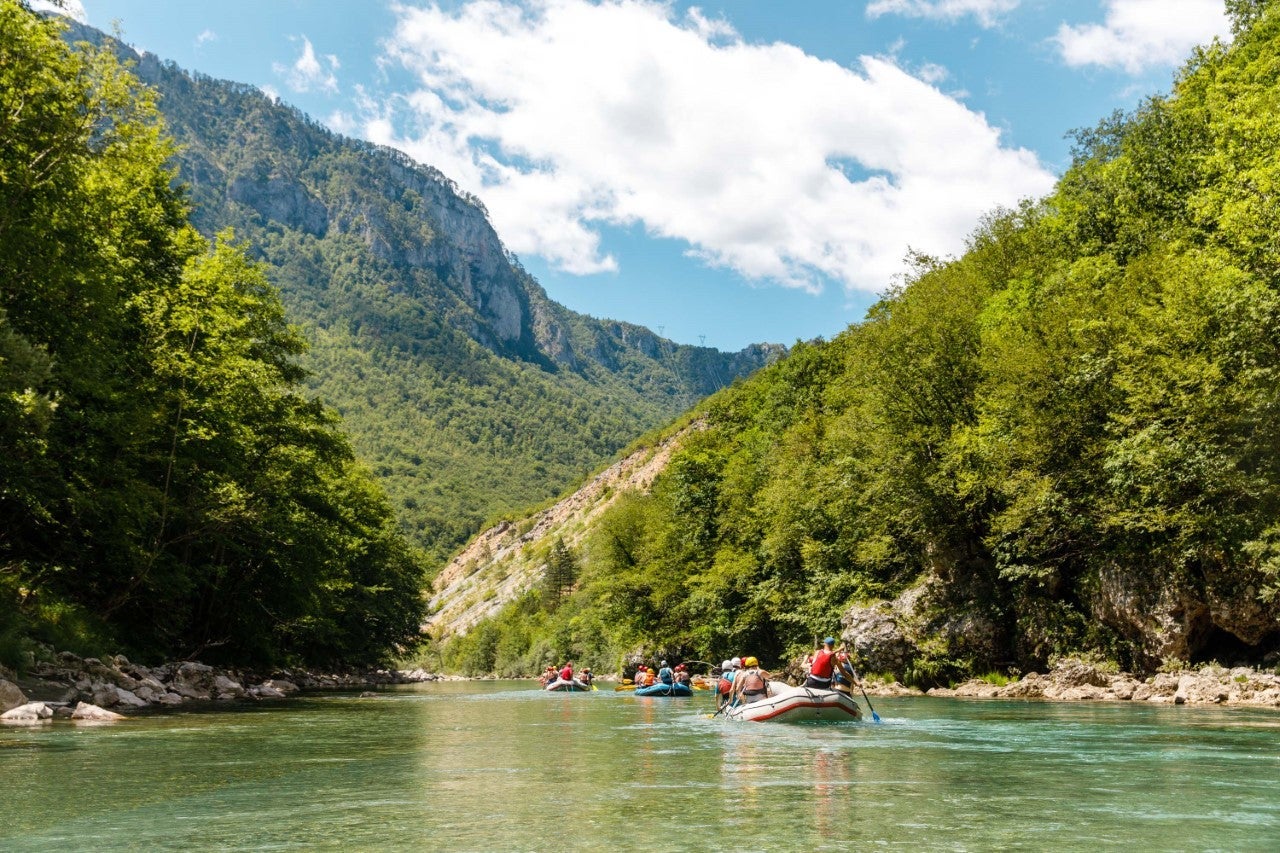Are carbon labels the next big thing in sustainable travel?
Helen Coffey discovers why transparency is the latest trend for the eco-conscious traveller


Picture this: you’re scrolling through holiday options, trying to decide where to book for your next big trip. But instead of comparing the facilities, the number of infinity pools or the size of the breakfast buffet, you’re weighing up the carbon emissions of each possibility – because the numbers are right there, in black and white, for all to see.
Carbon labels aren’t just a flight of fancy, nor a “nice-to-have” extra to be added on at some unspecified point in time: it’s a trend that has already taken off, and looks set to only get bigger.
“Do I think it will be everywhere? I do,” Sam Bruce, co-founder of Much Better Adventures, says of carbon labelling. It was the first international travel company to introduce the concept at the beginning of 2021. “It should go beyond travel and they should be on all products that we buy; carbon labels should be the new calorie.”
And it seems travellers are all for making more eco and ethical choices. New research from Booking.com’s 2021 Sustainable Travel Report found that 43 per cent of nearly 30,000 people surveyed say the pandemic had made them want to travel more sustainably in the future. Meanwhile, 64 per cent of travellers say they wanted to stay in “sustainable accommodation” in the year ahead.
Although the primary reason to include carbon labels is not, at this point, really to do with consumers at all, according to Sam. It’s first and foremost about the companies themselves; about them knowing what their carbon footprint (and the footprint of their product) is with a reassuring degree of accuracy, and taking the next steps to do something about it.
“You can’t manage what you don’t measure,” he says. “That’s the first tenet of any good carbon action plan: first you measure, then you reduce, then you remove, then you campaign – for carbon transparency and change across the industry.”
Transparency is key in this equation – not just to ensure that no one’s fudged the numbers, but to convince jaded travellers who’ve been bombarded with empty promises that this is far from an exercise in greenwashing. The carbon labels have all been verified by a third-party carbon consultant, in this case C-Level, before being peer reviewed by a range of partners and experts. In Much Better Adventures’s case, the label includes carbon emissions from all local transport, accommodation, activities, guides, staff and office operations. Every single trip now has its own fully measured footprint, with the detail granular enough that the company can start to tweak elements to reduce that number even further.
Carbon labels should be the new calorie
The label doesn’t include flights and travel to the destination – “partly because we don’t offer flights and because we didn’t have the data”, says Sam – but the business still measured a sample of its trips with air travel accounted for.
“Flights made up the majority of the carbon footprint of our trips – 80 per cent,” says Sam. “Our bit of the holiday was relatively low in carbon – we’re camping, we’re kayaking, we’re hiking. The bit that needs work is the flights. That’s where we need to provide better low-carbon alternatives.”
The brand is already making some headway in this area, having released a new collection of flight-free trips swapping plane for train.
Pura Aventura, another travel company with sustainability at its heart that’s released carbon labelling this year, has taken a different approach. The UK tour operator introduced labels for itineraries as part of its preparation to become a certified B Corporation – the premier sustainability certification only awarded to brands that are legally committed to balancing purpose and profit – but it wasn’t as straightforward as giving each trip a number.
“The complexity we have is that all our trips are tailor-made – so we can’t say we’ve got 50 trips and let’s measure the carbon of each one,” says co-founder and CEO Thomas Power. “Every trip is different. You need a live tool – so we built it into our database.”
The company doesn’t just measure the trip itself, but includes the travel to get there, door-to-door: “We want to know where you live, where the airport is, which flight you’re taking,” says Thomas. “We can plug into the database your postcode, Gatwick airport, your short-haul flight – and then the carbon factor calculates the journey and the amount of carbon produced.”
It means that Pura Aventura can get an accurate picture of emissions per trip – although going the extra mile is, quite literally, built into the process. The carbon measurement is done by the amount of carbon emitted per kilometre, but the company rounds it up to the amount per mile; a multiplication of about 1.6.
The next step for both travel companies is mitigation. Although it’s an added bonus for customers to be able to compare and contrast carbon labels for different holidays, the real end goal for the businesses is to ensure emissions are being offset, after being reduced as much as possible.
This is genuinely about companies wanting to do the right thing
“From our perspective, rather than putting the burden onto customers, it’s our responsibility as a business to take the next step,” says Sam. “We don’t put that on the customer and I think that’s right. We’re going to plant enough trees to sequester double the amount of carbon emitted from our trips. We’re also funding rewilding projects, rather than just putting new trees in the ground.”
Thomas also takes Pura Aventura’s mitigation efforts seriously: the company helps fund a rural community development project called Taking Root based in Nicaragua, employing locals to harvest native seeds and grow the saplings in nurseries. Farmers are given a long-term income via a 10-year stipend predicated on the health of the trees, which also facilitate the growing of shade-grown crops, commanding a higher price.

Both brands are deeply aware that carbon labelling is only part of the story – that in order for tourism to truly become more responsible, there needs to be a tipping-point shift towards slow travel, with an emphasis on local providers and longer, fewer trips. But it’s a good place to start; and it looks like the wider world may soon follow suit.
“I think schemes like carbon labelling and the B-Corp movement are being picked up rapidly by businesses,” says Thomas. “There’s imperfection and greenwashing, yes, but the conversations we’re having across industries weren’t being had 10 years ago. And these aren’t being driven by customer demand – this is genuinely about companies wanting to do the right thing.
“It’s as simple as that.”
Join our commenting forum
Join thought-provoking conversations, follow other Independent readers and see their replies
Comments
Bookmark popover
Removed from bookmarks